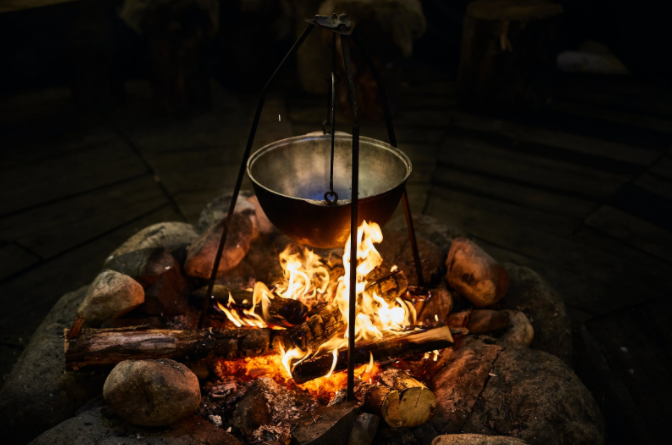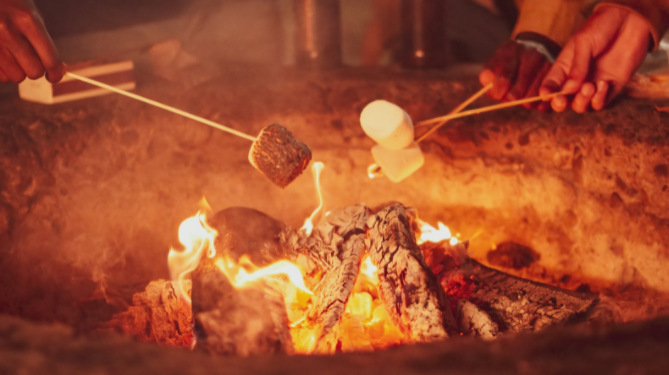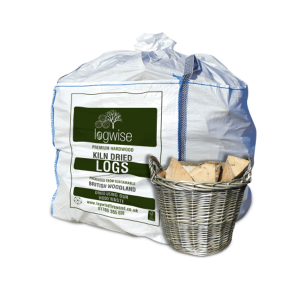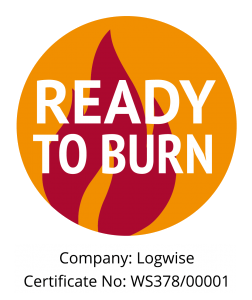
Cooking over a campfire: the ultimate guide
Whatever the time of year, cooking over an open fire is a lovely way to spend an evening. In the heat of summer though, when the nights are long and the temperatures never drop too low, an evening spent fireside carries maximum appeal.
But many people are wary of cooking over a fire, with the main barriers of entry being knowledge and confidence. People are unsure what to cook, how to do it, and how to stay safe. So with that in mind, we’ve pooled our expertise and put together this guide to cooking over a campfire.
Here’s what we’ll cover:
- What you’ll need
- Campfire cooking techniques
- Things to cook over a fire on a stick
- Safety tips
After reading you’ll have all the information you need to whip up a safe and delicious meal!
And a quick note: this guide does not go into how to build or maintain a fire! If you’re looking for that information, check our other blog post here.
What you’ll need
There are all sorts of specialist gear for cooking over a campfire. Heat shields, extravagant contraptions for hanging pots and pans, and so on.
This guide does not go into those things. Here we’re just looking at cooking with equipment most of us will have kicking around at home. Our hope is that this makes the guide more accessible to beginners.
Here’s a list of things that will be helpful when cooking over a fire. Note that you won’t need all of these things – pick and choose depending on what you’re planning to cook and how you’re planning to cook it.
- Tinfoil
- Pots and pans
- Tongs
- Grill rack
- Oil
- Skewers
- Cutlery
- Plates
- Water bottle
Campfire cooking techniques
Imagine yourself cooking over a campfire and the mental picture probably includes some skewers, some sausages, and your hand holding them over the flame.
But even though this is probably the most famous method, don’t think for a second that it’s the only way!
In fact, you may be surprised just how much flexibility you have when deciding how to cook your campsite cuisine.

In this section, we’ll take a look at four of our favourite techniques for preparing your meal. The best part is that you can use these in tandem, too, opening up the possibility of some truly scrumptious spreads.
Grilling
Holding food over a flame on sticks is grilling in its purest form. If you’re using this technique there are a couple of ways to improve results:
- Use two sticks to hold pieces of food in place: this prevents them from spinning around as you rotate, and helps with achieving more even cooking.
- Balance the stick over the flame, rather than holding it: if your fire is in a pit or has stones around it, you may be able to balance the skewer and give your hands a rest. Turn it occasionally to cook evenly.
You can also branch out a little and use a grill rack or grate to make things easier: just pop your grill rack over the flame, add your food, then turn during cooking.
When grilling, whack some coals into the fire to keep the temperature at the right levels. Top the bed of coals up with sticks occasionally to stop the embers from dying down.
The thing to bear in mind when cooking over a campfire is to not build up your flame too much. You don’t want huge flames licking your food as this will burn and lead to uneven cooking.
Frying
Grilling is great, but there’s no denying the flavour explosion of a well fried piece of food. The crispiness, the texture, and the whole enjoyable experience: all of this is available when cooking over a fire.
When frying you need to think a little harder about the state of the flame: it should be a couple of inches high, maximum. As with grilling, using a bed of coals will help to regulate and maintain temperature.
For best results frying, use a pan. Add a little oil just like you would at home, then add your eggs, sausages, prawns, or whatever you’re planning to fry. It is very important that you ensure there is no way for your oil or butter to come into contact with the fire: they will burst into flame and this is dangerous.
As with grilling you can hold the pan in your hand or rest it on the grill rack.
Baking
In my family, wrapping up a potato in foil and chucking it in the flame is a camping favourite. Lots of people aren’t aware that you can bake food on a campfire though! If that includes you, let’s bring you up to speed.
Wrapping food in foil and placing it in or near the flame is a great way to cook certain things. Potatoes lend themselves really well to this, but a fillet of fish bathed in lemon juice and butter will do well too.
Simply pop your parcel of food near the flame – not too close! – and it will cook gently.
If you’re looking for a desert, why not slice open a banana, add some choc chips and mini marshmallows, then wrap tightly with foil. Wait a while and you’ll have a sweet, molten pudding that the whole family will love.
Or, if you’re feeling especially adventurous, it’s even possible to bake a cake on a campfire!
Boiling
Many people overlook the possibility of boiling over a campfire. You need a suitable container, but if you’ve got something to hand, it’s very easy to bring liquid to the boil.
When cooking over a campfire you can use metal cups, camping saucepans, billy tins, or even a pan from your kitchen. This depends on where you are and how much stuff you fancy carrying.
The most obvious application is to boil water for noodles, pasta, or maybe even some veggies. But it’s also viable to boil up a stock or broth for a stew, soup, or other liquid-based meal.
Depending on what gear you have with you, you can hang a pot with a tripod or stick. This is probably our favourite, although it’s also possible to hold it over with your hand as well. Make sure to use a pan with a long handle!
Things to cook over a fire on a stick
If you don’t fancy an elaborate evening of cooking, there’s no shame at all in cooking up a few tasty morsels on skewers. Here are some of our favourites:
- Marshmallows: there’s something undeniably human about roasting a marshmallow over a flame. It improves the flavour and, done carefully, you can get several layers of crispy sweet goodness from each one. There’s also the inevitable banter as someone misjudges and drops their entire marshmallow onto the open flame.
- Sausages: perhaps the quintessential campfire food, whacking a sausage on a stick is a quick and easy way to cook it. With so many types of sausage available nowadays, you’re not limited on flavour either. Combine with a nice bit of bread and the right sauce and bam, you’ve got a gourmet sausage sandwich.
- Hot dogs: OK, they’re basically sausages, but hot dogs hold a strong enough spot in our collective imagination that we’re including them as their own food. Make sure to bring ketchup and mustard for maximum authenticity.
- Pineapple: you’re not limited to meat and marshmallows. Roasting wedges of pineapple above a flame gives them a lovely caramelised flavour, and they make a fantastic campfire snack.
- Bread: ball up some bread and slide a skewer through it, and you’re on the way to making makeshift dough balls. As the outer layer crisps up, the centre stays softer. Take a bite and you’ll find an explosion of taste and texture.
Safety tips
Cooking over fire is, unsurprisingly, prone to mishap. Here are our top tips for a safe and tasty time:
- Supervise children at all times, and never let them cook unattended.
- Make sure cooking equipment is clean before starting.
- Wash up ASAP: it’s easy to put pots and pans in your bag then forget about them, and return to a mouldy nightmare next time you camp.
- Lots of stomach upset happens when food isn’t cooked properly: make sure food is piping hot throughout before eating, especially meat.
- Remember that sell-by dates may not be accurate if you’re carrying food with you while walking with the view to cooking it at the end of the day.
- The last two points are particularly pertinent when preparing seafood: be very careful if you’re bringing fish, prawns, or similar!
There you have it
Now you should have everything you need to whip up a delicious meal for you and your friends. Sitting around the fire and helping each other to prepare a meal is a special kind of bonding experience, and we’re sure you’ll love it.
Browse our best sellers
-
Kiln dried logs, shipping-dependent
From £155.00 Select options This product has multiple variants. The options may be chosen on the product page -
Kiln dried logs, shipping-dependent
From £155.00 Select options This product has multiple variants. The options may be chosen on the product page
-
From £5.00 Select options This product has multiple variants. The options may be chosen on the product page
-
Eco firelighters, Eco firelighters local, Logwise local
From £3.00 Select options This product has multiple variants. The options may be chosen on the product page














